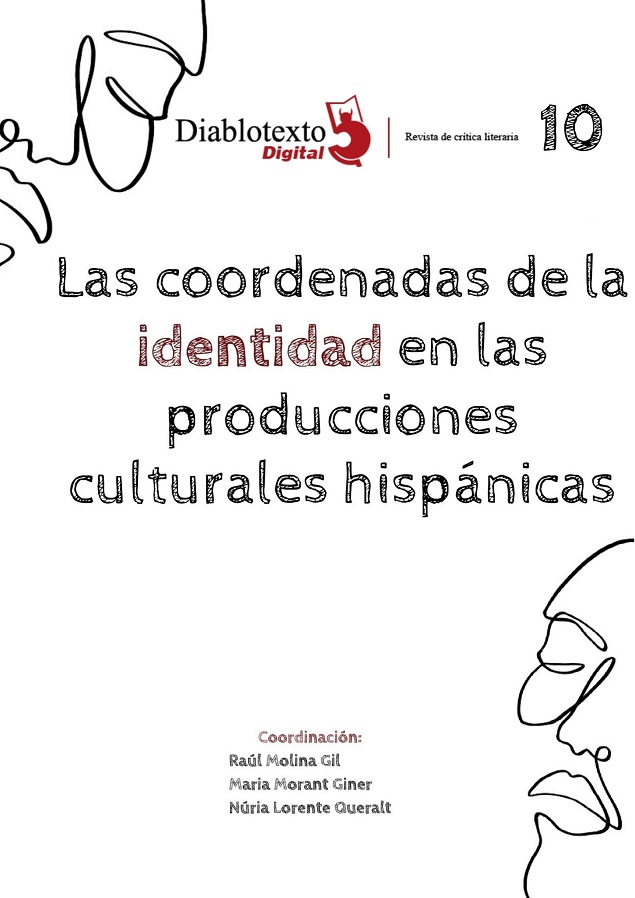Exile and identity in Luisa Carnés’ short stories: comparative analysis between “Cuentos españoles” and “Cuentos mexicanos”
DOI:
https://doi.org/10.7203/diablotexto.10.21586Keywords:
Luisa Carnés, short stories, exile, identity Abstract
Abstract
In this paper we analyze Luisa Carnes’ short stories. Carnés took up exile due to the Spanish Civil War. The separation from her home leads to the apparition of several topics in her short stories written in Mexico that are, on the one hand, a continuation of the topics initiated in Spain from a different perspective, and, on the other hand, the acceptation of the prototypical topics from the host culture. In this way, exile will mark the writer’s identity, which is divided between the memory of her home and the adaptation to the country that took her in.
 Downloads
Downloads
 References
References
Aznar Soler, Manuel (2017). “Insilio y exilio interior”. En María Paz Balibrea (coord.), Líneas de fuga. Hacia otra historiografía cultural del exilio republicano español. Madrid: Siglo XXI, pp. 169-174.
Carnés, Luisa (1951) “Adiós a Natalia Valle”. El Nacional (6 de junio), pp. 3-7.
Carnés, Luisa (2018a). Rojo y gris: cuentos completos I. Sevilla: Editorial Renacimiento.
Carnés, Luisa (2018b). Donde brotó el laurel: cuentos completos II. Sevilla: Editorial Renacimiento.
Domínguez Prats, Pilar (2002). Mujeres españolas exiliadas en México (1939-1950) (Tesis doctoral). Madrid: Universidad Complutense de Madrid.
Kay, Paul y Kempton, Willet (1984). “What is the Sapir-Whorf Hypotesis?”. American Anthropologist, 86, 1, pp. 65-79.
Martínez, Josebe (2007). Exiliadas: escritoras, guerra civil y memoria. Barcelona: Editorial Montesinos.
Martínez Fernández, Ángela (2020). “¡Fuera de España los yanquis! El exilio permanente de una escritora imposible”. Cultura de la República. Revista de Análisis Crítico, n.º 4, pp. 82-111.
Montiel Rayo, Francisca (2018). “La vida y la muerte en los cuentos sobre la Guerra Civil de Luisa Carnés”. Orillas, n.º 7, pp. 45-59.
Pla Brugat, Dolores (2002). “Una convivencia difícil. Las diferencias dentro del exilio republicano español en México”. En Pablo Yankelevich (coord.), México, país refugio: La experiencia de los exilios en el siglo XX. México: Editorial Plaza y Valdés, pp. 219-228.
Plaza, Antonio (2002). “Hacia el exilio. La etapa mexicana”, introducción a El Eslabón Perdido, de Luisa Carnés. Sevilla: Editorial Renacimiento.
Plaza, Antonio (2011). “Intelectuales hacia México: el viaje de ‘Veendam’. Un episodio simbólico en la historia del exilio republicano de 1939”. En Manuel Aznar Soler y José Ramón López García (ed.), El exilio republicano de 1939 y la segunda generación. Sevilla: Editorial Renacimiento, pp. 830-844.
Olmedo, Iliana (2010). “Los exiliados republicanos y la cultura mexicana: Los artículos de Luisa Carnés en El Nacional”. Laberintos, n.º 12, pp. 49-70.
Olmedo, Iliana (2014). Itinerarios de exilio. La obra narrativa de Luisa Carnés. Sevilla: Editorial Renacimiento.
Sánchez Zapatero, Javier (2008). “Memoria y Literatura: Escribir Desde el Exilio”. Lectura y signo, n.º 3, pp. 437-453.
Ugarte, Michael (1999). Literatura española en el exilio: un estudio comparativo. Madrid: Siglo XXI de España.
Zimmerman, Klaus (1991). “Lengua, habla e identidad cultural”. Estudios de lingüística aplicada, n.º 14, pp. 7-18.
Downloads
Published
How to Cite
-
Abstract656
-
PDF (Español)601
Issue
Section
License
Licencia de reconocimiento de Creative Commons “Reconocimiento - No Comercia l- Sin Obra Derivada
Authors who publish with this journal agree to the following items:
The authors will keep their copyright and guarantee the journal the right of first publication of their work, which will be simultaneously subject to the Creative Commons license that allows third parties to share the work indicating its author and its first publication in the journal. The authors may adopt other non-exclusive license agreements to distribute the version of the published work (e.g., depositing it in an institutional telematic file or publishing it in a monographic volume), with an acknowledgment of its initial publication in this journal. The authors are allowed and encouraged to disseminate their work through the Internet (e.g., in institutional telematic archives or on their website) before and during the submission process, which can produce interesting exchanges and increase citations of the published work. (See Effect of Open Access)




